A somewhat large bright yellow-tailed bird often found congregating around large pendulous colonies.
Meet The Chestnut-headed Oropendola
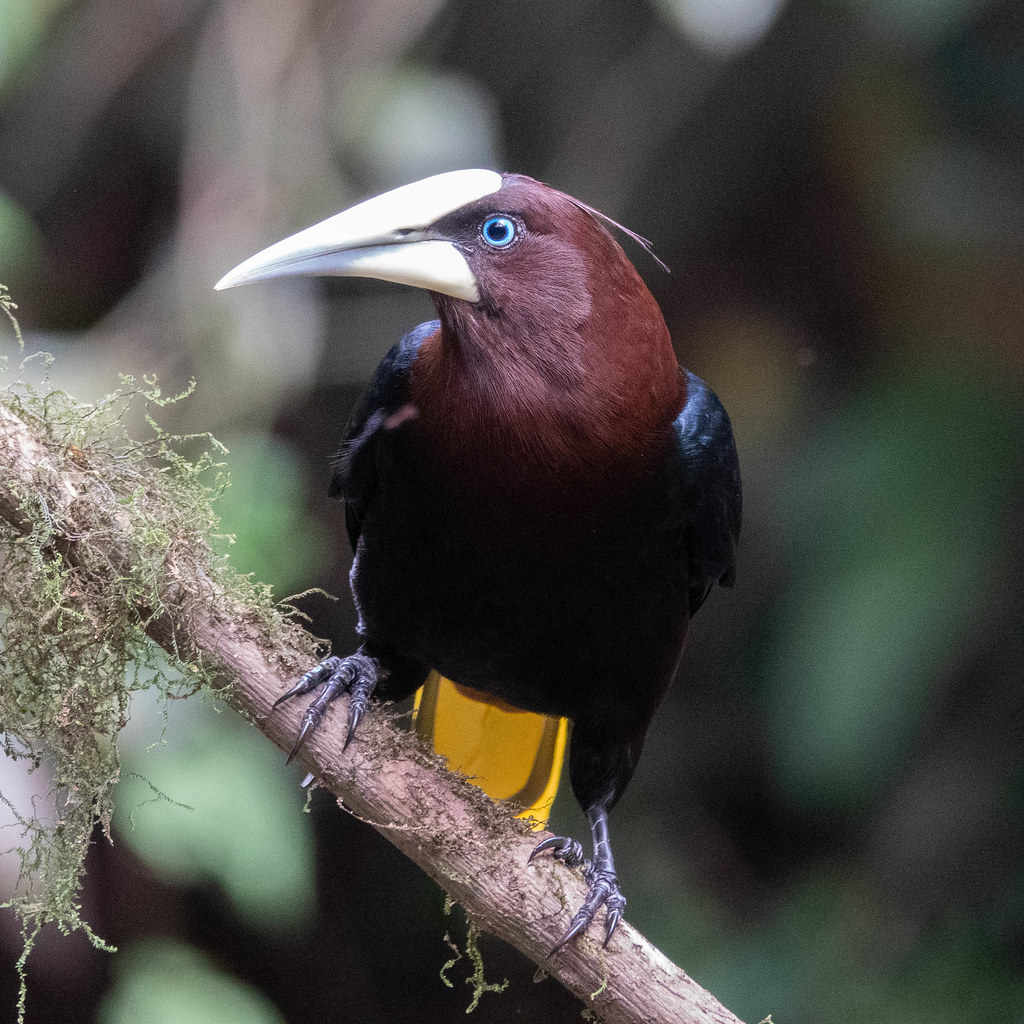
Photo Courtesy of Eric Gropp / CC BY 2.0
The chestnut-headed oropendola (Psarocolius wagleri) is a large bird measuring 35 centimeters long (14 inches) long, weighing in at 225 grams (7.9 oz). The female is around 28 centimeters long weighing in at (4.4 oz). Males are mainly black birds wearing a chestnut head and rump finished off with a bright yellow tail that has two dark central feathers. The eyes are blue and the bill is long and white.
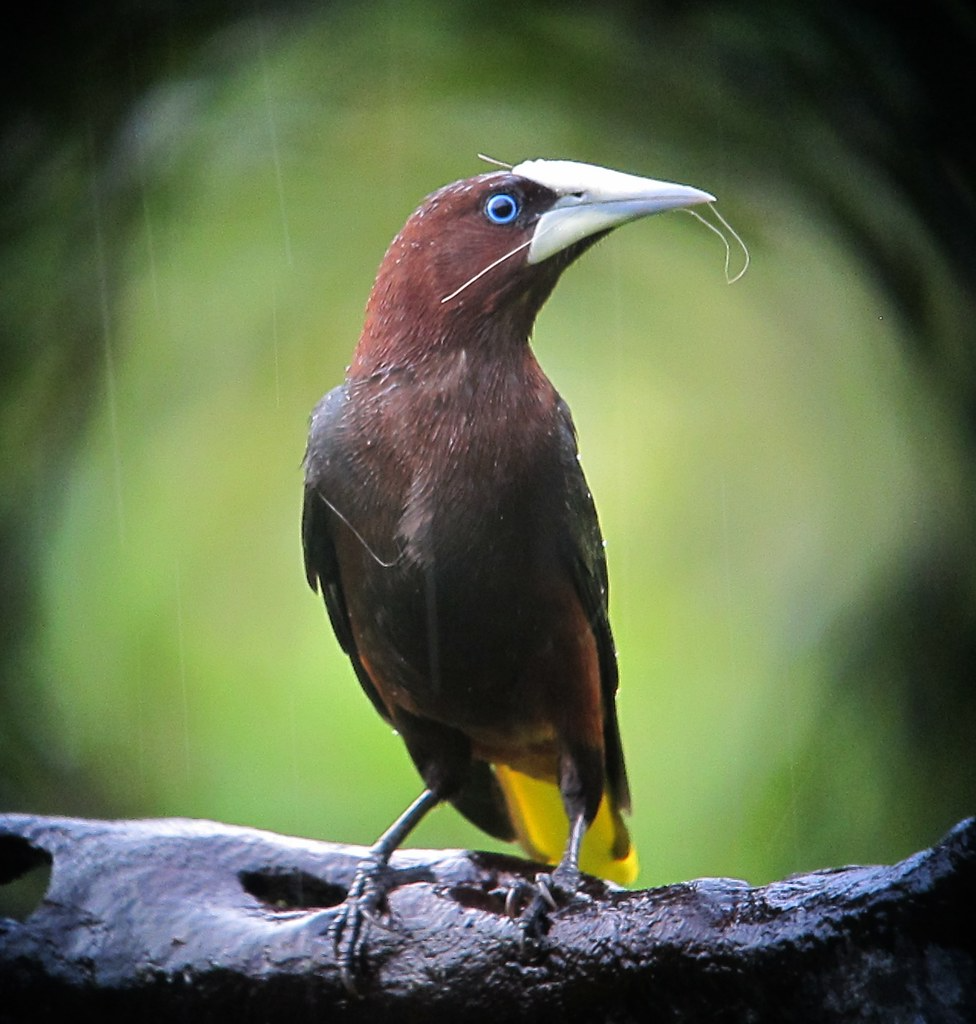
Photo Courtesy of felixú / CC BY-SA 2.0
Females look very much like their male counterparts, though they are smaller.
Younger birds have brown eyes and are duller than adult birds.
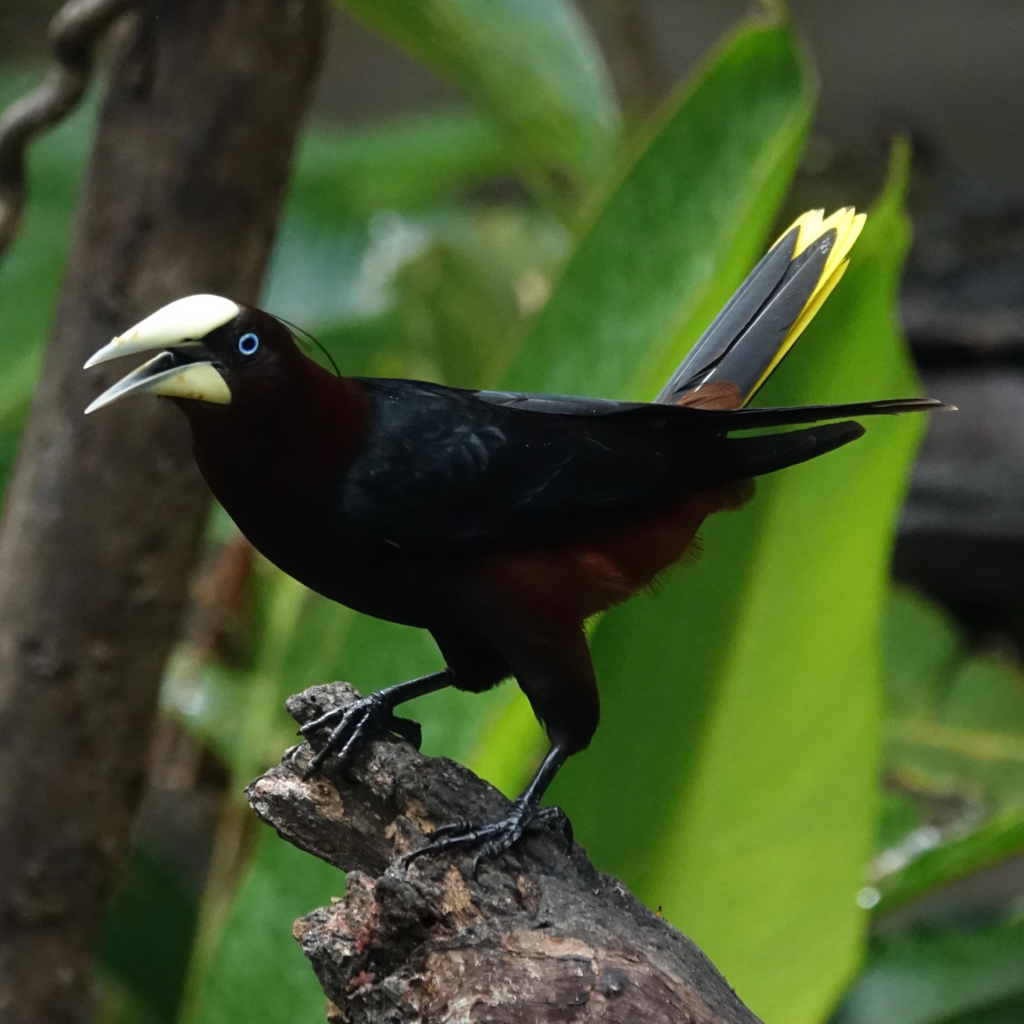
Photo Courtesy of Mike’s Birds / CC BY-SA 2.0
These birds can be found in the Caribbean coastal lowlands from southern Mexico through to central Costa Rica, on both slopes of southern Costa Rica and Panama, and the Pacific lowlands of Colombia down to northeastern Ecuador.
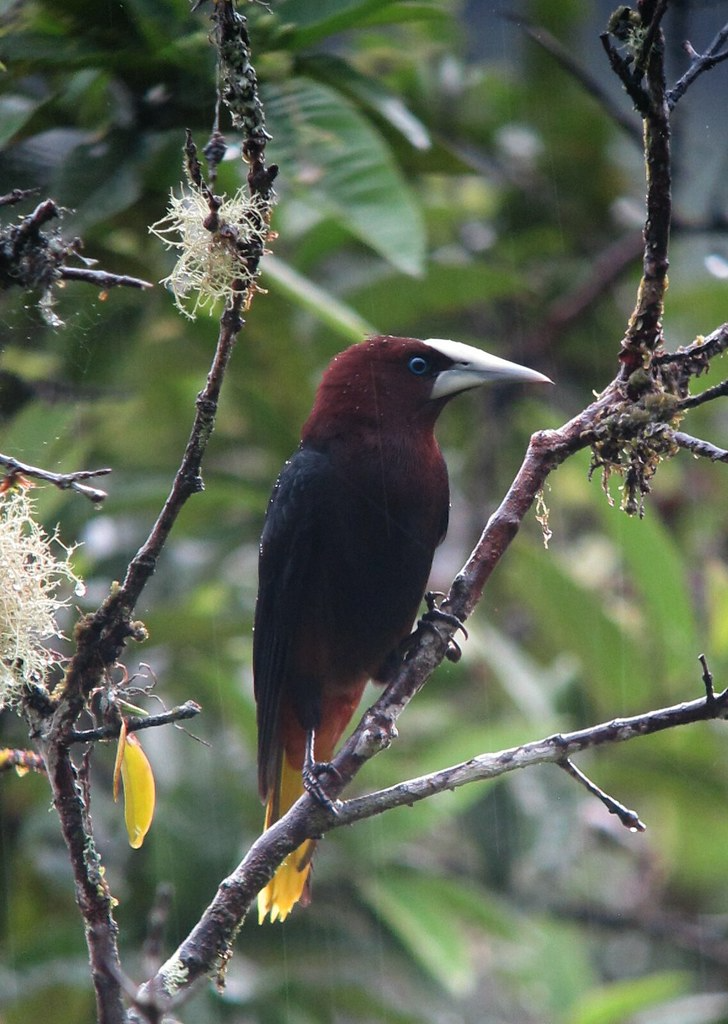
Photo Courtesy of felixú / CC BY-SA 2.0
The Chestnut-headed Oropendola likes to live in around the canopy and edges of forested areas in humid areas.
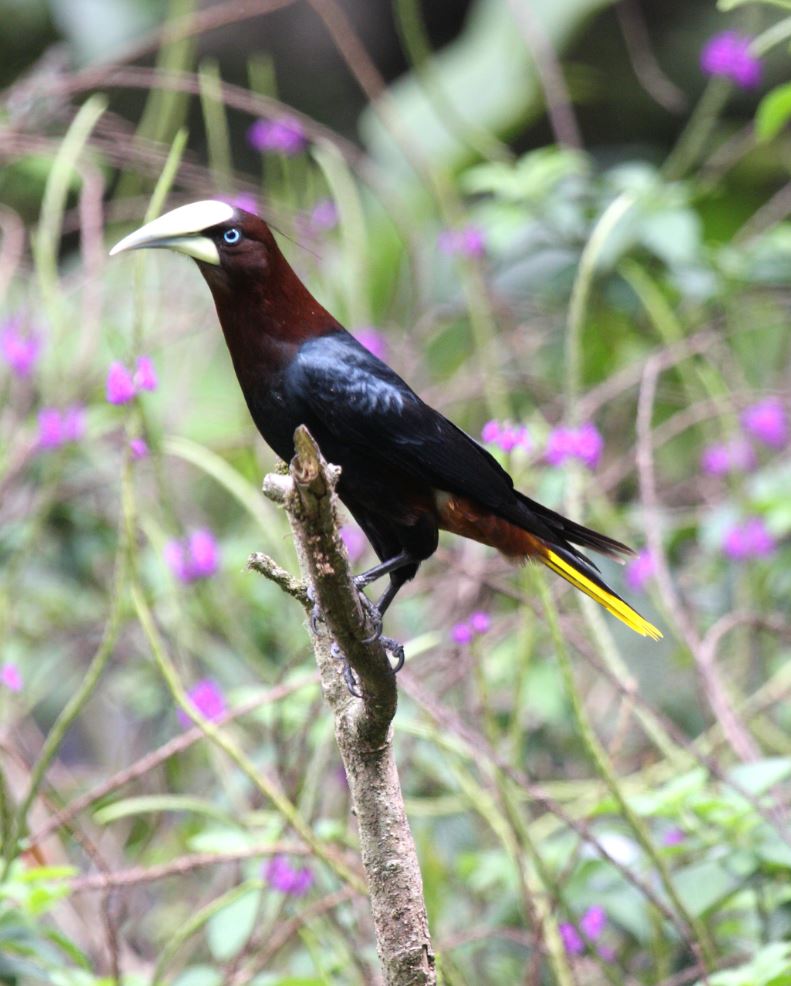
Photo (cropped) Courtesy of Dominic Sherony / CC BY-SA 2.0
The agile Chestnut-headed Oropendola mostly forages in the canopy, as it hops, runs, and hangs on branches, looking for fruit or the nectar of large flowers like those found on the balsa tree; they may also descend to look for small frogs and lizards.
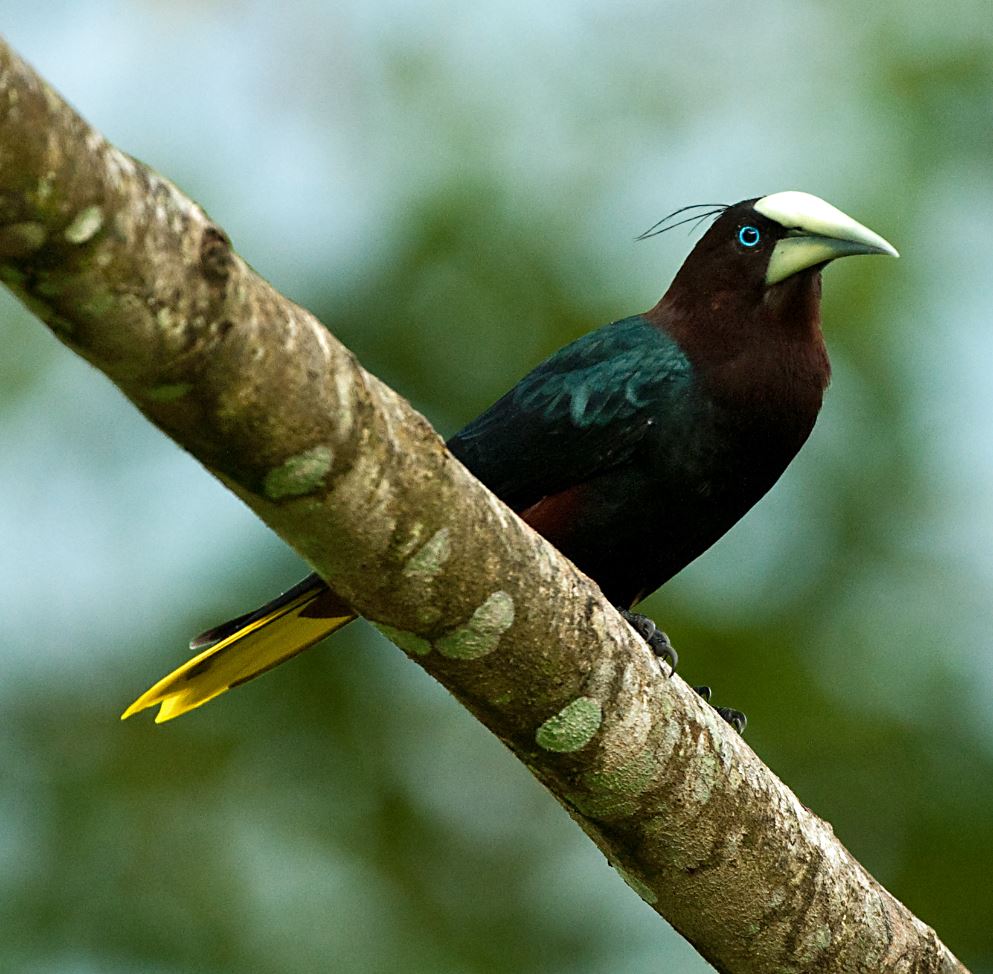
Photo (cropped) Courtesy of Kathy & sam / CC BY 2.0
Chestnut-headed Oropendola are colonial breeders, building woven nests built from plant fibers and vines, which they hang from trees. Measuring 60 – 100 cm long, the female lays two dark-marked pale blue eggs which hatch in around 17 days. Young become fledged in around 30 days.

Photo Courtesy of don r faulkner / CC BY-SA 2.0
This bird is regarded as of Least Concern on the IUCN Red List.
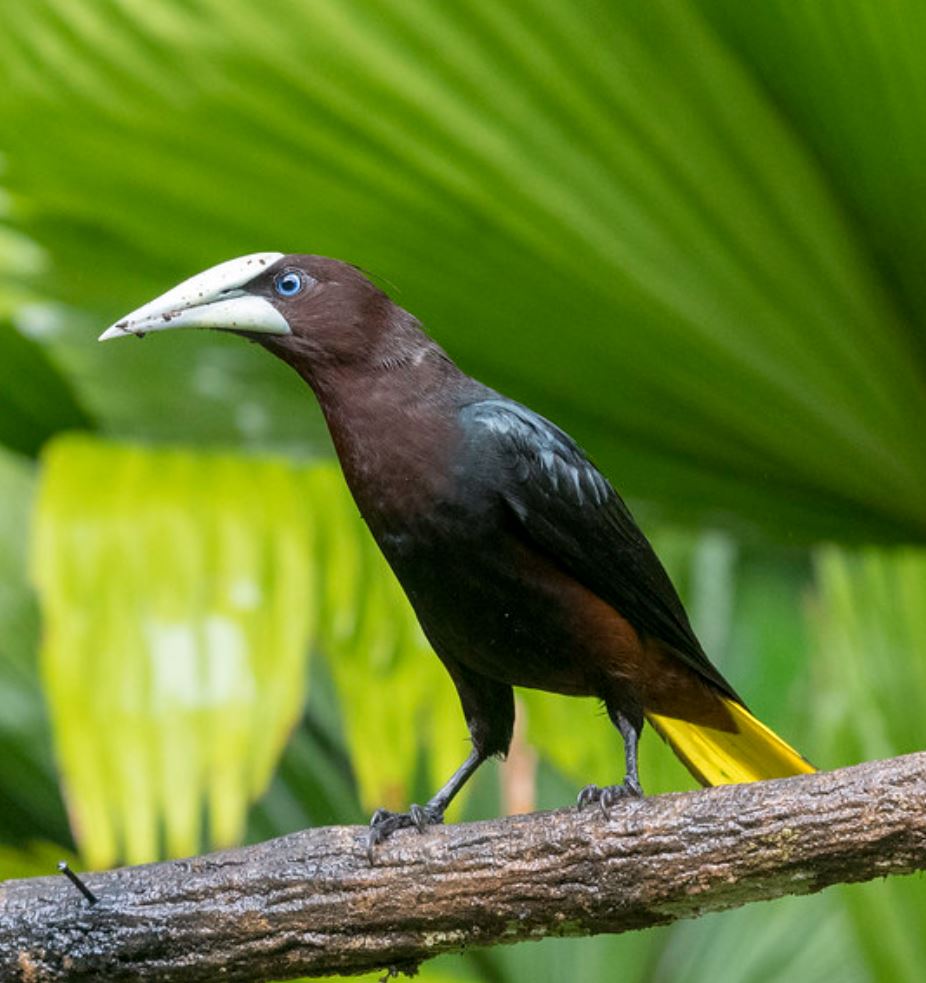
Photo (cropped) Courtesy of Gavia_Stellata / CC BY 2.0
You can watch and listen to this bird right here in the video below:




